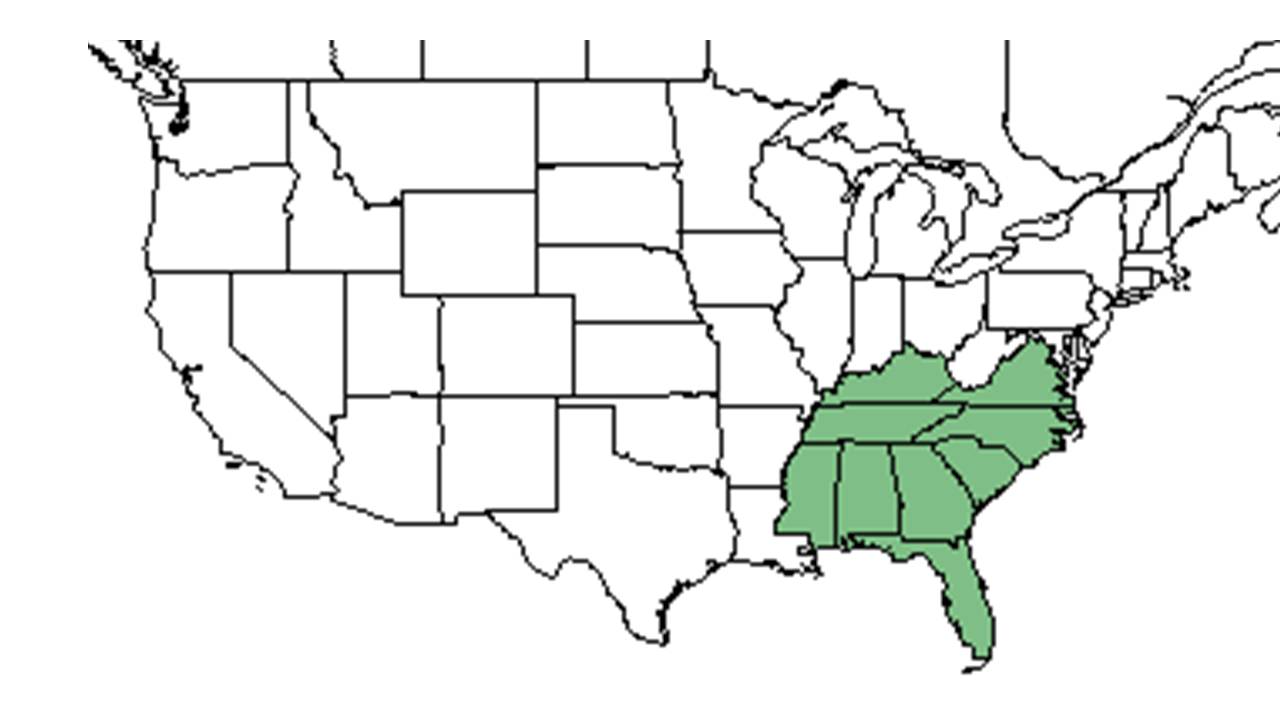Difference between revisions of "Penstemon australis"
Laurenloria (talk | contribs) (→Seed dispersal) |
|||
| Line 36: | Line 36: | ||
Flowering has been observed in April, while fruiting has been observed in May. <ref name="FSU Herbarium"/> | Flowering has been observed in April, while fruiting has been observed in May. <ref name="FSU Herbarium"/> | ||
===Seed dispersal=== | ===Seed dispersal=== | ||
| − | + | This species disperses by gravity. <ref>Kirkman, L. Katherine. Unpublished database of seed dispersal mode of plants found in Coastal Plain longleaf pine-grasslands of the Jones Ecological Research Center, Georgia.</ref> | |
<!--===Seed bank and germination===--> | <!--===Seed bank and germination===--> | ||
Revision as of 18:48, 17 November 2016
| Penstemon australis | |
|---|---|
Error creating thumbnail: Unable to save thumbnail to destination
| |
| Photo taken by Gil Nelson | |
| Scientific classification | |
| Kingdom: | Plantae |
| Division: | Magnoliophyta - Flowering plants |
| Class: | Magnoliopsida – Dicotyledons |
| Order: | Scrophulariales |
| Family: | Scrophulariaceae |
| Genus: | Penstemon |
| Species: | P. australis |
| Binomial name | |
| Penstemon australis Small | |

| |
| Natural range of Penstemon australis from USDA NRCS Plants Database. | |
Common names: Eustis Lake beardtongue; Southern beardtongue; Sandhill beardtongue
Contents
Taxonomic notes
Description
Penstemon australis is a perennial herbaceous species.
"Virgate, single-stemmed to bushy, perennial herbs with a mildly fetid odor; stems glabrous or pubescent. Leaves simple, unlobed, serrate or entire, those of the basal rosette petiolate, cauline leaves sessile, opposite, usually lanceolate. Inflorescence a panicle or thyrse. Sepals 5, free to base; corolla tubular, 2-lipped, the upper lip 2- lobed, the lower lip 3-lobed, throat inflated; fertile stamens 4, staminode pubescent; stigmas undivided, style 1. Capsule subconical; seeds angular, reticulate, usually ca. 1 mm in diam." [1]
"Stems one to several, 2-7 dm tall, not branched above the base, glabrous to pubescent. Leaves glabrous to pubescent, moderately thick, the basal oblanceolate to obovate, usually 5-10 (14) cm long, 1.5-2.5 (3.5) cm wide, subentire or occasionally dentate, often persistent through anthesis, cauline laves narrowly lanceolate, 3-10 cm long, 0.5-2.5 cm wide, coarsely toothed to rarely subentire. Thyrse moderately compact, not leafy, glabrous to densely glandular, the tips of the glands less than ¼ the length of, and little broader than, the stalks. Sepals 3-5 mm long; corolla rose to lavender and violet, the guide lines usually reddish purple alternating with white, the floor deeply pleated, 15-25 mm long, gradually inflated to a throat 6-8 mm in diam., lobes spreading. Anther sacs glabrous, staminode densely bearded for most of its length with golden trichomes 1 mm long, exserted. Capsule 6-8 (10) mm long; seeds 0.1-1.1 mm long, often conspicuously apiculately thickened." [1]
Distribution
Ecology
Habitat
P. australis occurs in the dry loamy sand of longleaf pine forests and pine-oak sandhills. [2] It also can be found in mixed woodlands and pine-hickory uplands. [2] On the other hand, it appears in disturbed habitat as well, including roadsides and near areas that have been logged. [2] Associated species include Pinus palustris, Carya, and Quercus. [2]
Phenology
Flowering has been observed in April, while fruiting has been observed in May. [2]
Seed dispersal
This species disperses by gravity. [3]
Fire ecology
This species has been found in habitat that is burned annually. [2]
Conservation and management
Cultivation and restoration
Photo Gallery
References and notes
- ↑ 1.0 1.1 Radford, Albert E., Harry E. Ahles, and C. Ritchie Bell. Manual of the Vascular Flora of the Carolinas. 1964, 1968. The University of North Carolina Press. 947. Print.
- ↑ 2.0 2.1 2.2 2.3 2.4 2.5 Florida State University Robert K. Godfrey Herbarium database. URL: http://herbarium.bio.fsu.edu. Last accessed: June 2014. Collectors: Rodie White, Robert K. Godfrey, R. A. Norris, R. Komarek, and Loran C. Anderson. States and Counties: Florida: Gadsden, Leon, Liberty, Wakulla, and Washington. Georgia: Grady.
- ↑ Kirkman, L. Katherine. Unpublished database of seed dispersal mode of plants found in Coastal Plain longleaf pine-grasslands of the Jones Ecological Research Center, Georgia.